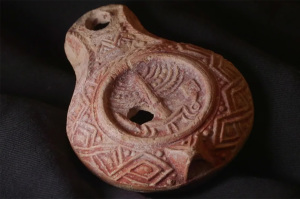Your Church Is Too Small: Recovering a Biblical Ecumenism
When I began this ministry nearly ten years ago, it was often a challenge convincing Christians that there might be a problem within the church in America-that maybe, just maybe, the contemporary church had suffered missional drift of a sort, so much so that the we find ourselves more converted than converting. So prevalent is the effect that we frequently find ourselves drinking in the waters of consumerism, modernism, and more recently postmodernism, often unaware of their influence in our lives and, more importantly, how we understand what it truly means to be a follower of Christ.
Suffice it to say, this is no longer the challenge it once was. Most serious-minded Christians today recognize that the church has suffered a serious loss of relevance to public life, frequently watered down its message, and is all-too-often comfortable in a culture that is increasingly hostile to Christian truth. In short, Christianity has-to a large extent-become domesticated, seemingly more committed to preserving the values of Christianity than to following the Christ of Christianity.
Addressing some of the contributing factors to this condition has been the focus of this ministry since its inception. I'm thankful the Lord has raised a multitude of prophetic ministries and leaders to confront the many complex issues plaguing the church today. One of those leaders is my good friend Dr. John H. Armstrong. John's heart and ministry has been captured by the rampant sectarianism and disunity common to the church today and so destructive to the church's witness. In response, John has authored what I think is one of the most important books written in our generation-Your Church Is Too Small: Why Unity in Christ's Mission Is Vital to the Future of the Church (Zondervan).
In Your Church Is Too Small, John presents a vision of the unity possible for Christians across social, cultural, racial, and denominational lines. As to the validity of John's vision, the esteemed J. I. Packer writes:
It is the one that views the visible church as a single worldwide, Spirit-sustained community within which ongoing doctrinal and denominational divisions, though important, are secondary rather than primary. In this vision, the primary thing is the missional-ecumenical vocation and trajectory crystallized for us by our Lord Jesus Christ in his teaching and prayer and illustrated in a normative way by the Acts narrative and much of the reasoning of the apostolic letters. … The vision Armstrong offers … is neither unanimity nor uniformity nor union (as he neatly puts it) but loving cooperation in life and mission, starting from wherever we are at the moment and fertilized and energized by the creedal and devotional wisdom of the past. Thus the internal unity of togetherness in Christ may become a credibility factor in the church's outreach, just as Jesus in John 17 prayed that it would.
Far from the liberal ecumenism of the 1960s, John shows how diverse Christians can (and must) maintain unity in obedience to Christ without necessarily surrendering their doctrinal convictions. As John so thoroughly shows from Scripture, when Jesus' followers seek unity through participation in the kingdom of God and the mission of Christ, they provide an essential gospel-witness to a watching world. In John 17, Jesus prays to the Father, "I do not ask for these only, but also for those who will believe in me through their word, that they may all be one, just as you, Father, are in me, and I in you, that they also may be in us." And what is the result of our being one? "… The world may believe that you have sent me (John 17:20–21, ESV). How often do we miss this incredibly important point? Jesus is clearly saying that our visible unity-our relationship to one another-is essential to showing the world that there is a God and He has sent His Son.
Your Church Is Too Small will challenge you to think in a profoundly biblical way about the visible church on earth. The church, beyond its representative institutions, is an organic body-the body of Christ-that gathers in many places, often holding different ideas, across many languages, socioeconomic strata, and cultures. There is, and always will be, diversity in the Lord's church by God's design (see 1 Corinthians 12:12–31). Sadly, this diversity has often been the source of strife, contention, and division rooted mostly in fear. John shows how this fear and division has been destructive to both persons and the mission of the church. Your Church Is Too Small doesn't get bogged down in our failure on this front but offers real hope-hope that God is now mercifully and graciously moving. John writes:
All evidence indicates that the church in our day is coming together in a new expression of both diversity and unity. This is a time of worldwide transition. This is happening through the work of the Holy Spirit in our midst, reminding us that the church, though not always good, remains holy because it is the creation of God the Holy Spirit. Within this new expression of the supernatural reality of the church, a growing emphasis on mission and ecumenism is being powerfully joined together in the practice of ministries, missions and churches. My purpose in writing Your Church Is Too Small is to help you begin to recognize this connection and embrace the outcomes which such a vision will bring.
When the church, according to Jesus, is living in visible relationship with each other, it is then that the world will know that God the Father has sent the Son. Is this not the desire of every faithful, gospel-centered Christian? I join with Dr. Packer in concluding, "I hope this book will not be ignored but will have the influence it deserves. Aspects of North America's future-aspects, indeed, of the honor and glory of Christ in this century-may well depend on whether or not it does."
If you long to see the witness of the church powerfully manifested in our generation then buy this book, read it, be transformed by it, share it, and teach it to others!





























